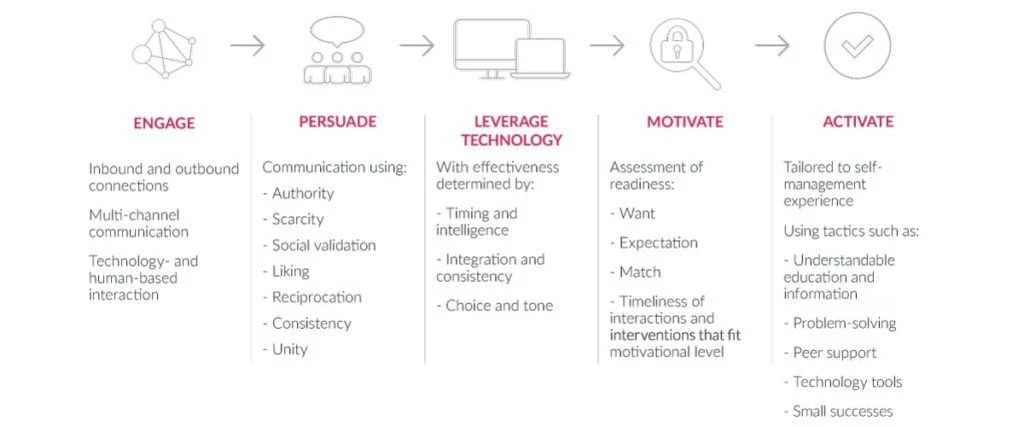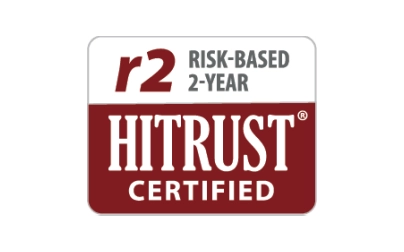Not that long ago, epidemiologists were likely the only ones discussing terms like social distancing, quarantine or super-spreader events on a regular basis. But now governments, businesses and schools are facing the patient engagement struggles scientists, public health experts and healthcare organizations understand only far too well.
When the COVID-19 pandemic hit, everyone was suddenly asked to adopt new ways of interacting: stay at home, wear masks in public, keep 6 feet apart, avoid large gatherings, use hand sanitizer, the list goes on. In a short period of time, motivating organizations to implement—and people to follow—recommended health and safety guidelines became a crucial tool in stopping the spread.
While the pandemic is already changing healthcare consumer behavior in ways that are expected to last long after the health crisis is over, the general public may still need convincing that a quickly developed vaccine is safe. About 40% of Americans aren’t willing to get a COVID-19 vaccine according to a November Gallup poll.
To influence consumer confidence and entice people to schedule vaccinations, healthcare organizations will have to understand the needs that drive human behavior like never before. One positive aspect of being nine months into a pandemic? There’s valuable behavioral data for developing effective patient engagement strategies.
At Carenet Health, we’re anticipating healthcare organizations will make leveraging those data insights a priority—to ultimately design more effective healthcare engagement initiatives.
Here are just a few of the questions the industry will be considering with a fresh perspective:
- What really motivates people to participate more fully in their own health? In wellness and care management programs?
- How should engagement work differ across generations?
- What are the current barriers to engagement success?
- How can the latest technology help influence behavior?
- What do new consumer behavior science theories mean for healthcare?
Lessons in healthcare consumer behavior from the pandemic
American consumers now seem more willing to take an active role in the healthcare system, according to a recent study from PwC’s Health Research Institute (HRI). Telehealth quickly moving into the mainstream shows how readily consumers are adapting to change and adopting new care delivery options.
But as you might expect, the HRI study revealed that some consumers are forgoing care during the pandemic, with attitudes and behaviors related to things like medication adherence being affected. In the study, 22% of consumers reported they had already made or were planning to make adjustments to their spending on medications, with 9% saying they planned to save money by stopping medications altogether.
Another consumer behavior being affected? Online engagement. Before the pandemic, healthcare organizations might have expected low responses to the emails they sent to members. But according to Forbes, both email engagement and conversion levels are on the rise during the health crisis. Online shopping, including purchases of health and wellness items, has also been booming with 43% of all online sales for brands in the U.S. in March being driven by new customers.
More time spent at home and in front of screens is most likely fueling greater comfort levels with digital interactions. Consumers have adapted quickly to new ways of shopping like online grocery ordering. There’s never been a better time for healthcare organizations to embrace and improve digital communication channels to drive patient engagement.
For health engagement to be effective, however, healthcare organizations will need to pay attention to a wide range of factors, including the consumer’s age, their fears, even the current political climate. A multi-pronged approach based on behavior science will be key.
Leveraging behavior science to help drive effective activation
Whether it’s getting a brand-new vaccination during a pandemic or managing a chronic condition, consumers usually need ongoing encouragement to make positive health changes.
In the post-pandemic world, healthcare organizations won’t just be able to invest in new technology and communication channels. They’ll need to truly understand how persuasion principles, motivational readiness and activation all work together to drive success.
At Carenet, we follow a five-step process to achieve this success, as outlined in the chart below. The first step is, of course, engagement. To get consumers to get a vaccine, for example, healthcare organizations will need to communicate where and when the vaccine is available and explain the benefits of getting it … and do that across multiple communication channels.

Next, healthcare organizations must use behavior science best practices to more easily persuade and motivate healthcare consumers, while choosing technology that provides an effective vehicle for communication timing and tone.
With the COVID-19 pandemic ushering in a new era of customer engagement and changes in healthcare consumer behavior continuing to evolve, healthcare organizations that can be flexible and adapt will be the ones who successfully get consumers to activate.
A renewed focus on behavior science and how it can influence healthcare consumer behavior is one of our top eight predictions discussed in our 2021 Healthcare Consumer Engagement Forecast. You can download the complete forecast here.
To learn more about Carenet’s healthcare engagement solutions, connect with us today.


